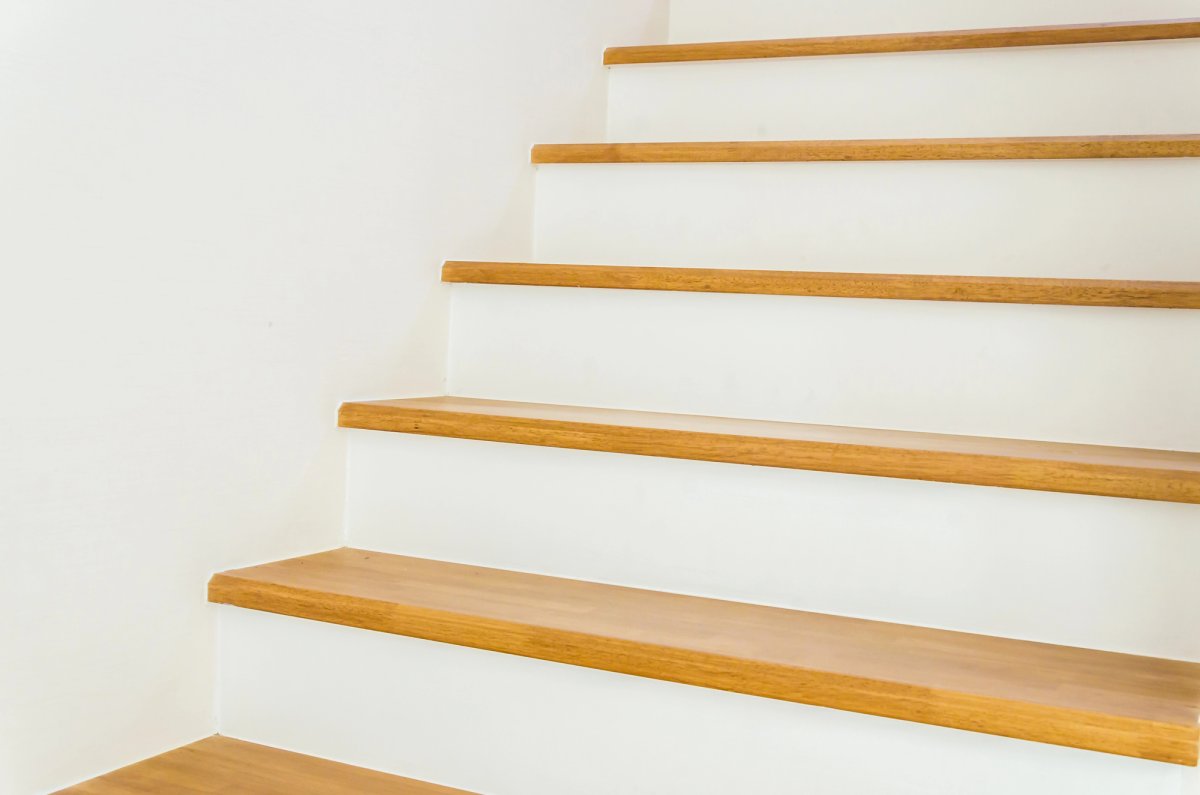We may earn revenue from the products available on this page and participate in affiliate programs. Learn More ›
Want to know how to build stairs? In many ways, the task of laying out a staircase resembles that of rafter layout. The carpenter’s square is essential; the rise/run ratio, too, comes into play, as it’s applied to the risers and the treads, the boards on the face and top surface of the stairs.
Determining the Rise
The vertical distance between the floors to be linked by the staircase is the principal determinant of the riser and tread dimensions. You divide the height by 7 inches; if, say, the floor-to-floor distance is 8 feet, 10 inches (or 106 inches), then you’ll need 15 treads (106 divided by 7 equals 15.14).
Next, you divide the height by the number of treads (15 into 106), producing the exact tread height (7.06 inches).
Determining the Run
Now come the formulas. The Rise plus the Run should equal approximately 17.5 inches. (Some designers prefer the formula Two Rise plus the Run should equal between 24 and 25 inches, but whichever formula you use, your staircase should probably have steps 7 inches or so high and treads 10 inches or so deep.)
In our example, 17.5 minus 7 1/16 produces a tread width of 10 7/16 inches or, to use the alternative formula, we would have a width of between 9 7/8 inches and 10 7/8 inches.
Now that you know the rise and run, laying out the carriage (the side boards that support the risers and treads) for the stairs is not unlike rafter layout. Again, the square is positioned on the board, with the blade and tongue calibrations aligned so that the rise and run measurements are at the edge of the carriage. Then you work up the carriage, repeating the process, moving and marking.


